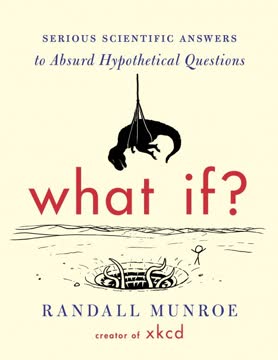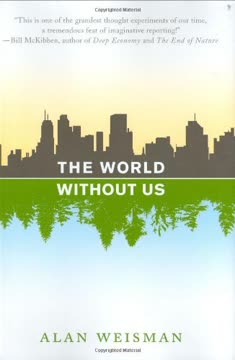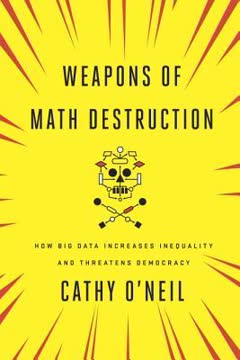Key Takeaways
1. Mathematics: Is it Discovered or Invented?
"Ideal entities independent of human consciousness violate the empiricism of modern science."
A philosophical debate. Mathematicians grapple with whether they are uncovering eternal, universal truths that exist independently of humanity or if mathematics is a human creation, like language or art. This question touches on the very nature of reality and our place within it. Some argue that if math is invented, its uncanny ability to describe the physical universe is a profound mystery.
Human-centered view. A growing perspective suggests mathematics is deeply rooted in human biology and experience. Our innate number sense, possibly hard-wired by evolution, allows us to perceive quantity. More complex concepts, like algebra or calculus, are seen as cultural improvisations built upon these basic instincts, much like literature is built from simple words and grammar.
Testing the theories. This debate is explored through various lenses, including cognitive science, which studies how the brain processes numbers, and the potential for alien civilizations to possess radically different mathematical systems if they evolved in vastly different environments. While no consensus exists, the discussion highlights the surprising origins and nature of mathematical thought.
2. The Unreasonable Effectiveness of Math in Describing the Universe.
"The miracle of the appropriateness of the language of mathematics for the formulation of the laws of physics is a wonderful gift which we neither understand nor deserve."
Nature follows math. A central mystery is why the universe appears to obey mathematical laws, from the motion of planets to the behavior of subatomic particles. This "unreasonable effectiveness" of mathematics in the natural sciences is seen by many as evidence that mathematical truths are discovered, not invented.
A deep connection. Even abstract mathematical concepts, developed purely for their internal logic and beauty, often turn out to be precisely what physicists need to describe reality.
- Einstein's theory of relativity relied on tensor analysis.
- Quantum mechanics uses different mathematical systems.
- Ricci flow, used in geometry, found application in proving the Poincaré conjecture.
Beyond utility. While applications in physics are striking, mathematicians often pursue their work for its own sake, seeking elegance and beauty. The faith is that even the most abstract ideas may eventually find unexpected utility in describing the natural world, often decades or centuries later.
3. Coincidence Isn't What You Think: The Surprising Math of Chance.
"With a large enough sample, any outrageous thing is apt to happen."
The law of large numbers. Events that seem incredibly improbable when considered in isolation are actually quite likely to occur given enough opportunities or people. What appears to be a one-in-a-trillion coincidence for a specific person might be a one-in-thirty chance of happening to someone in a large population.
Demystifying the uncanny:
- Law of Truly Large Numbers: In a large population, rare events are expected daily.
- Multiple End Points: Many different outcomes can qualify as a "coincidence" (same birthday, same name, same hometown), increasing the overall probability of some match occurring.
- Close, Not Exact: Allowing for near misses (birthdays within a day or week) dramatically increases the likelihood of a match.
Debugging intuition. Our brains are wired to seek patterns, even in random data, leading us to overestimate the significance of coincidences. Statistical analysis reveals that many seemingly extraordinary events are simply the predictable outcome of chance in a large and complex world.
4. Chaos and Randomness: Finding Patterns in Unpredictability.
"Tiny differences in input could quickly become overwhelming differences in output—a phenomenon given the name 'sensitive dependence on initial conditions.'"
Order in disorder. Chaos theory explores systems that appear random but are governed by deterministic rules. The "Butterfly Effect" illustrates that minuscule changes in initial conditions can lead to vastly different outcomes over time, making long-term prediction impossible even if the underlying rules are known.
Exploring chaotic systems:
- Weather patterns
- Fluid turbulence (waterfalls, smoke plumes)
- Stock market fluctuations
- Dripping faucets
- Tumbling moons and asteroid orbits
Limits of prediction. While chaos makes precise long-term forecasts impossible, it reveals underlying structures and patterns, like "strange attractors" or "Lagrangian coherent structures," that describe the character of the disorder. This helps scientists understand why systems behave erratically and identify periods of relative stability or instability.
Catastrophe theory's fate. Unlike chaos theory, which found enduring patterns, catastrophe theory, which sought to predict sudden events like riots or market crashes based on mathematical "cusps," ultimately faded as its predictions proved too vague and its mathematical basis for real-world application was questioned.
5. Computers Revolutionize Math: From Tools to Automated Proofs.
"It’s a sign of power, of reasoning power."
Beyond calculation. Computers were initially seen as powerful calculators for complex problems. However, they have become much more, serving as experimental tools for exploring mathematical landscapes and even generating proofs that were previously out of reach for humans.
Transforming mathematical practice:
- Experimentation: Computers allow mathematicians to visualize complex structures (like minimal surfaces) and explore the behavior of equations.
- Automated Proofs: Programs can now find proofs for problems that stumped human mathematicians for decades, raising questions about creativity and the nature of proof itself.
- Handling Complexity: Computers are essential for problems with vast numbers of possibilities (like the four-color problem proof) or for checking proofs too long for humans to verify manually.
New challenges. The rise of computational power introduces new questions, such as the P vs. NP problem, which asks if problems whose solutions are easy to verify are also easy to solve. It also raises concerns about the nature of proofs that rely on calculations too extensive for any single human to check.
6. Cryptography: The Quest for Unbreakable Codes and the Fight for Openness.
"The right to privacy of the American citizen is what this is all about."
The need for secrecy. In an increasingly digital world, secure methods for protecting sensitive information are paramount, from personal privacy to national security and financial transactions. Mathematicians have developed powerful encryption techniques based on the difficulty of certain mathematical problems, like factoring large numbers.
Public vs. Secret:
- The RSA system, based on factoring, allows for seemingly unbreakable "public key" encryption.
- This technology enables secure online commerce and communication.
- Its power led to conflict between the government (NSA) and academic/industry researchers over control and secrecy.
The debate over openness. The NSA sought to restrict the publication and export of advanced cryptographic research, fearing it would aid adversaries. Researchers argued that open development was crucial for widespread security and that suppressing knowledge was futile and harmful to academic freedom and technological progress.
Pushing the limits. The ongoing effort to factor ever-larger numbers and find weaknesses in existing codes (like the Data Encryption Standard) is a constant race between code-makers and code-breakers, driving innovation and forcing a reassessment of security standards.
7. Solving the Unsolvable: The Drama of Famous Mathematical Problems.
"I have discovered a truly remarkable proof of this theorem which this margin is too small to contain."
Centuries of struggle. Certain mathematical problems, simple to state but notoriously difficult to prove, have captivated mathematicians for generations, becoming legendary challenges. Their pursuit has often led to the development of entirely new fields of mathematics.
Iconic examples:
- Fermat's Last Theorem: A 350-year-old conjecture about equations, finally proved by Andrew Wiles using highly advanced mathematics after a dramatic, years-long effort.
- The Four-Color Conjecture: Proved using extensive computer calculations, sparking debate about the nature of mathematical proof.
- The Poincaré Conjecture: Solved by Grigori Perelman using novel techniques, leading to a deeper understanding of 3D space.
- The Riemann Hypothesis: A 150-year-old problem about prime numbers, still unsolved, considered by many to be the most important open problem today.
Beyond the prize. While prizes and fame are associated with solving these problems, the true value lies in the new mathematical insights and connections that the quest reveals, often linking seemingly unrelated areas of the field.
8. The Human Element: Inside the Minds of Mathematicians.
"He spoke of a Great Book in the sky, maintained by God, that contained the most elegant proofs of every mathematical problem."
A unique calling. Great mathematicians are driven by an intense curiosity and a deep appreciation for the beauty and power of abstract ideas. Their world is often one of solitary contemplation, seeking elegant truths that may be invisible to others.
Diverse personalities:
- Paul Erdos: A nomadic genius, driven solely by mathematics, living off the generosity of colleagues, prolific and inspiring.
- Andrew Wiles: Secretive and determined, working in isolation for years to solve a single problem.
- John Horton Conway: Playful and eclectic, fascinated by games, puzzles, and the hidden structures of the world.
- Srinivasa Ramanujan: An uneducated Indian prodigy with an uncanny intuition for mathematical formulas.
Intuition and logic. Mathematicians rely on both rigorous logic and flashes of intuition. They often describe theorems and proofs in aesthetic terms, seeking beauty and elegance. This blend of art and science, intuition and proof, defines their unique approach to understanding the universe.
9. Math in Everyday Life: Explaining the Unexpected.
"If you look in a flour sifter while you sift, things are bouncing around and large things tend to come up to the top."
Unseen mathematical forces. Mathematical and statistical principles are at play in many seemingly mundane phenomena, offering surprising explanations for everyday occurrences. These insights can change how we view the world around us.
Examples from daily life:
- Brazil Nut Effect: Larger objects rise to the top when shaken, explained by the dynamics of particle movement and gap formation.
- Traffic Flow: Closing streets can sometimes improve traffic flow, a counterintuitive result demonstrated by queuing theory.
- Card Shuffling: It takes precisely seven riffle shuffles to thoroughly mix a deck, a result with implications for games and randomness.
- Coincidences: The math of probability explains why seemingly rare events happen more often than we expect (e.g., lottery winners, shared birthdays).
- Data Analysis: Statistical methods are used to analyze everything from election results and weather forecasts to disease clusters and the effectiveness of medical treatments, though interpreting the numbers requires careful consideration of biases and inherent uncertainties.
Beyond the abstract. These examples show that mathematics is not confined to abstract theory but provides powerful tools for understanding and even influencing the world we inhabit.
Last updated:
Review Summary
The New York Times Book of Mathematics receives mixed reviews. Some readers find it an interesting collection of articles spanning 100 years of mathematical developments, offering insights into the lives of mathematicians and historical perspectives. Others criticize its repetitiveness, lack of depth, and questionable organization. The book is praised for its accessibility to non-mathematicians but faulted for oversimplification. While some appreciate the variety of topics covered, including cryptography and game theory, others feel the content is too general and outdated. Overall, it seems best suited for casual readers interested in a broad overview of mathematical history.
Similar Books










Download PDF
Download EPUB
.epub digital book format is ideal for reading ebooks on phones, tablets, and e-readers.




